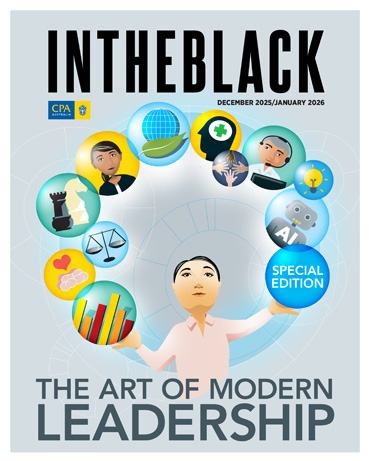Loading component...
At a glance
Celebration is not usually the first reaction when something goes wrong in a business — but for organisations that understand the value of making mistakes, taking risks and learning from them can be a strategic advantage.
Creativity is inextricably bound up in that process: without risk, mistakes won’t be made and new ideas won’t be formed. Without new ideas, businesses will struggle to grow. In fact, identifying potential risks — from cybersecurity breaches to financial or operational failures — becomes far more effective when creativity is encouraged rather than constrained.
The World Economic Forum’s Future of Jobs Report 2025 lists creative thinking as one of the top skills businesses need, alongside resilience, flexibility and agility. From cyber attacks and supply-chain disruptions to reputational crises, creative thinking helps organisations anticipate challenges and respond with solutions that go beyond traditional risk models.
So how can accounting and finance organisations cultivate a culture of creativity without compromising compliance, control and accountability? The first step may be as simple as identifying good risks versus bad risks, and embracing failure along the way.
Is productivity getting in the way of innovation?
Define risk and set boundaries
At first glance, creativity and risk management may seem at odds, but creative thinking is essential for identifying and navigating complex, emerging risks according to Aaron McEwan, vice president of research and advisory at Gartner.
“Effective risk-taking requires using creative strategies to explore many outcomes and find unintended consequences. But the most important thing is to recognise the idea of there being good and bad risk,” McEwan says.
“Bad risk is a breach of safety, an ethical breach or poor judgment. When it comes to things like managing safety or auditing processes, you don’t want people to be taking risks,” he contends.
"Organisations aren’t innovative without pushing boundaries. The trick is to identify the boundaries that you want to be pushed and the boundaries that you don’t."
“Good risk, however, is risk that leads to innovation or creative ways of solving complex and difficult problems. It could be risks that enable people to move faster through a process and gain efficiencies, for example.”
As well as defining what risk means in an organisation, having a clear definition of what creativity means also helps set boundaries and provides people with guidance. While taking risks shouldn’t mean putting the business in a vulnerable position, encouraging creativity doesn’t necessarily mean having a reckless attitude.
“Organisations aren’t innovative without pushing boundaries,” says McEwan. “The trick is to identify the boundaries that you want to be pushed and the boundaries that you don’t.”
Mykel Dixon, workplace creativity specialist and author, suggests false stereotypes of creativity — implying it is about “wild ideas” that are going to break the budget or offend people — can limit the use of creative thinking as an effective business tool.
“It’s more about ongoing discovery and dialogue that can provide you with a creative breakthrough, or at least the next step to take,” Dixon says.
“Creativity is the fundamental building block for almost every decision that isn’t just operational. In risk management, it is about thinking differently to anticipate, understand and mitigate risks in innovative ways.”
Innovation and Creativity short course
Celebrate failure
Organisations that have tackled the tension between creativity and risk are very clear on how failure can contribute to success, says McEwan.
“It is sometimes phrased as ‘celebrating failure’ because it leads to learning, which leads to innovation. If we look at it through the lens of creative problem-solving rather than failure, it helps identify efficiencies and what needs to be done differently.”
McEwan uses the example of DirecTV, a US television service provider that faced increased competition from emerging streaming services and recognised that innovation and risk-taking were key to their survival.
DirecTV’s solution was to introduce a gamification tool where employees were rewarded and celebrated for posting stories about failures. Instead of failure being a negative term, it became a positive one and resulted in a significant increase in innovation.
“They put people on a leaderboard when they experienced a failure, then wrote about what the failure was and how it led to learning and positive outcomes,” says McEwan.
DirectTV created a culture and an approach to risk management “where failure that led to learning and innovation was celebrated”, McEwan notes.
Applying creative thinking to risk management is all about reframing risk into opportunity, then helping people feel comfortable with looking at things differently, says Dixon.
“If you let people understand there are no good or bad ideas and you create the context for creativity to be explored, you will be able to access more ways of solving complex and difficult problems.”

